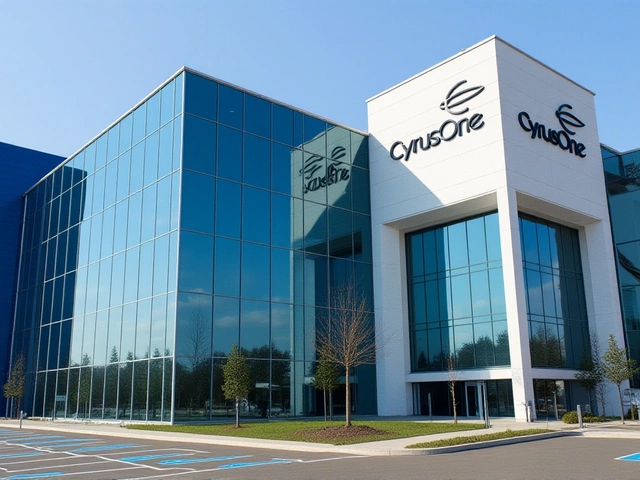Nobel Medicine Prize 2025 Honors Brunkow, Ramsdell and Sakaguchi for Immune Tolerance Breakthroughs

On October 6, 2025, the Karolinska Institutet in Stockholm announced that the Nobel Prize in Physiology or Medicine would be shared by three scientists whose work reshaped how we think about autoimmune disease.
The laureates – Mary E. Brunkow, immunologist at Celtech Cyrocience, Celtech Cyrocience, Fred Ramsdell, also of Celtech Cyrocience, and Shimon Sakaguchi, professor at the University of Tokyo – were honored "for their discoveries concerning peripheral immune tolerance." The news rippled through labs worldwide, because the mechanisms they uncovered form the backbone of new therapies for multiple sclerosis, type‑1 diabetes and even certain cancers.
How Peripheral Immune Tolerance Came Into Focus
The story starts with a simple question that haunted immunologists for decades: why does the body sometimes fail to recognize its own cells as harmless? In the early 1990s, Sakaguchi set out to answer that by looking at mouse T‑cells. He knew that helper T cells wear a CD4 badge, while killers sport CD8. "I kept seeing a subset of CD4⁺ cells that just wouldn't fire up the immune system," he once recalled in an interview, "as if they were the brakes on a runaway car."
The twist is that those brakes turned out to be a whole new class of cells. After more than a decade of painstaking sorting and functional assays, Sakaguchi published a landmark paper in The Journal of Immunology in 1995, describing CD4⁺CD25⁺ regulatory T cells – or Tregs – that actively suppress auto‑reactive responses.
But a discovery is only as strong as the evidence backing it. That's where Brunkow and Ramsdell entered the scene. Working at Celtech Cyrocience's Washington lab, they engineered mice lacking the Foxp3 gene – a transcription factor later shown to be the master switch for Treg development. Their mice developed severe multi‑organ inflammation, a live‑action proof that without Tregs the immune system goes berserk.
From Lab Mice to Human Medicine
Fast‑forward to today, and the trio's work is more than academic trivia. Clinical trials now explore Treg‑based cell therapies for graft‑versus‑host disease, while small‑molecule drugs aim to boost Treg function in patients with rheumatoid arthritis. "We finally have a biological lever to turn down the immune system without wiping it out," says Dr. Lina Patel, a rheumatology specialist at Johns Hopkins, referencing the cascade of research sparked by the 1995 discovery.
Interestingly, the roots of the story stretch back to the 1940s, when a puzzling batch of male mice in a U.S. laboratory kept falling ill for no apparent reason. Those early observations hinted at a hidden layer of immune regulation that would only be revealed eight decades later.
The Nobel Announcement – A Moment of Global Attention
The award ceremony itself was a tech‑savvy affair. Thomas Parman, Secretary General of the Nobel Assembly, introduced the laureates during a live‑stream that began precisely at 7 seconds in, with the formal declaration at the 45‑second mark. The broadcast offered simultaneous Swedish and English subtitles, ensuring that anyone from Stockholm to Seattle could follow along.
For many viewers, the most memorable line was Parman’s description of the laureates' impact: "Their work turned a theoretical curiosity into a therapeutic reality, giving hope to millions plagued by auto‑immune disease." The applause that followed lasted longer than the ceremony’s opening fanfare – a clear sign that the scientific community felt the significance.
What This Means for Future Research
Beyond the immediate medical implications, the prize signals a broader shift in immunology. Researchers are now treating the immune system not just as a defense force but as a finely tuned orchestra, where Tregs are the conductors keeping the volume in check. Funding agencies, noticing the Nobel spotlight, have already earmarked an extra €200 million for projects that explore “immune tolerance pathways.”
Even biotech firms are re‑thinking pipelines. Celtech Cyrocience, the company where Brunkow and Ramsdell made their breakthrough, announced plans to launch a partnership with a European consortium to develop a Treg‑based therapy for Crohn’s disease – a venture expected to reach Phase II trials by 2028.

Looking Ahead: The Rest of the Nobel Week
After the medicine prize, the Nobel schedule rolls on: physics on October 7, chemistry on October 8, literature on October 9, peace on October 10 and economics on October 13. Each announcement will be followed by press conferences, but none will likely eclipse the sheer human‑health relevance of the medicine prize.
For now, the scientific world will be dissecting the laureates’ publications, replicating key experiments, and, most importantly, translating those findings into clinics. As Dr. Patel puts it, "We’re on the cusp of a new era where autoimmune disease might be managed not by suppressing the entire immune system, but by fine‑tuning its internal brakes."
Key Facts
- Prize: Nobel Prize in Physiology or Medicine 2025
- Laureates: Mary E. Brunkow, Fred Ramsdell, Shimon Sakaguchi
- Discovery: Regulatory T cells (CD4⁺CD25⁺) and their role in peripheral immune tolerance
- Venue: Nobel Assembly at Karolinska Institutet, Stockholm, Sweden
- Date: October 6, 2025
Frequently Asked Questions
How might the Nobel‑winning research change treatment for autoimmune diseases?
The discovery of regulatory T cells provides a target for therapies that boost the body’s own ability to prevent auto‑immunity. Clinical trials are already testing Treg‑based cell infusions for graft‑versus‑host disease, and small‑molecule drugs that enhance Treg activity are in early‑stage development for conditions like multiple sclerosis and rheumatoid arthritis.
What role did Mary Brunkow and Fred Ramsdell play in confirming Sakaguchi’s findings?
Brunkow and Ramsdell demonstrated that mice lacking the Foxp3 gene – essential for regulatory T‑cell development – suffered severe inflammatory disease. Their work turned Sakaguchi’s theoretical Treg population into a concrete, genetically defined cell type, cementing the concept of peripheral immune tolerance.
Why is the discovery of regulatory T cells considered a breakthrough?
Before the 1990s, immunologists focused mainly on how the immune system attacks foreign invaders. The identification of Tregs revealed that the immune system also has built‑in brakes, preventing it from turning on itself. This paradigm shift opened new therapeutic avenues and reshaped basic research priorities.
Who announced the Nobel Prize and what was the format of the ceremony?
The announcement was made by Thomas Parman, Secretary General of the Nobel Assembly. The ceremony was live‑streamed with bilingual Swedish/English subtitles, and the formal declaration began 45 seconds into the broadcast.
What are the next steps for the laureates after receiving the Nobel?
All three plan to continue their research, with Sakaguchi returning to his lab in Tokyo, while Brunkow and Ramsdell will expand Celtech Cyrocience’s pipeline of Treg‑based therapies. They also expect to participate in advisory panels for the European Union’s new funding initiative on immune tolerance.




